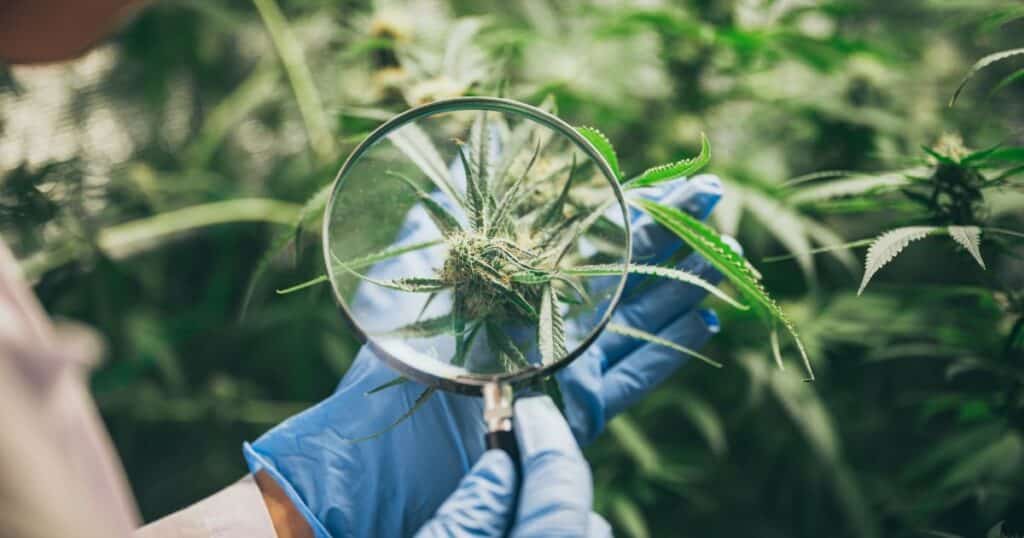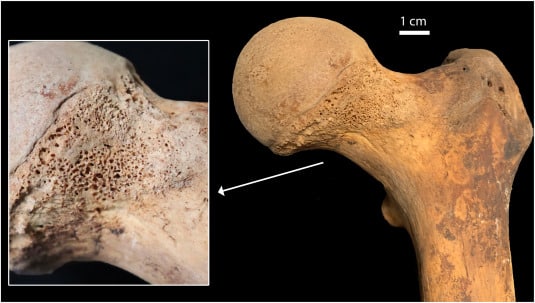A recent study conducted on Pre-Modern human bones from Italy in the 1600s has shed new light on the history of cannabis use in Europe. This groundbreaking research has revealed evidence of two cannabinoids, THC and CBD, present in the femoral bones of two individuals – a woman around age 50 and a teenage boy. These findings have significant implications for our understanding of cannabis use during this time period and provide insight into the recreational use of the plant.
Cannabis has a long history in Italy, with records dating back to ancient times. It was known for its medicinal properties and was used to treat various ailments. However, there is limited information on the recreational use of cannabis in Italy during Pre-Modern times. This study fills that gap by providing physical evidence of the plant’s use in this specific time period.
The study was published in the December issue of the peer-reviewed Journal of Archaeological Science and was conducted by a team of researchers from the University of Milan. The aim of this study was to search for analytical signs of the administration of medical or recreative plants in the population of Milano during the 17th century. The research methods used included toxicological investigations on bone samples collected from deceased patients at Ca’ Granda Hospital, one of the most important hospitals in Europe during the 17th century.
The toxicological investigations conducted on the bone samples involved the use of advanced analytical techniques to detect and quantify the presence of cannabinoids. The nine femoral bone samples were extracted via Solid-Phase Extraction and analyzed via Thermo Scientific™ TSQ Fortis™ II Triple-Quadrupole Mass Spectrometer, resulting in finding the presence of two cannabinoids, Delta-9-tetrahydrocannabinol (THC) and cannabidiol (CBD).
Per the study, the documentation related to the pharmacopeia used to treat patients in the Ca’ Granda is still present in the archives of the hospital. However, this plant was not listed inside the pharmacopeia, suggesting that the plant was not administered as medical treatment at the time in the hospital.
The absence of cannabis in hospital records at the time raises questions about the use of the plant for recreational purposes. While there is limited evidence, it is possible that people during this time period used cannabis for its psychoactive effects. The presence of THC in the bone samples supports this theory.
Possible reasons for cannabis use during this time period could include stress relief, social and cultural norms, as well as the plant’s perceived medicinal properties. It is also worth considering that cannabis was a commonly grown crop during this time period and could have been easily accessible for recreational use.
The findings of this study are significant because they provide the first direct evidence of cannabis use in Pre-Modern humans through analysis of human bone samples. While there has been evidence of cannabis use dating back thousands of years, such as through artifacts and written records, this is the first time that physical evidence has been found on human remains.
This discovery opens up new possibilities for further research on the history of cannabis use and its cultural and social impact. It also highlights the importance of using advanced analytical techniques to uncover new information about past societies.
Furthermore, this study adds to the growing body of research on cannabis use in Europe during historical times. With more evidence being uncovered, we can continue to deepen our understanding of how and why humans have used this plant throughout history.

The recent discovery of evidence of cannabis use in Pre-Modern human bones from Italy provides valuable knowledge and insights into the history of this plant. It not only sheds light on the recreational use of cannabis during this time period but also highlights the long-standing relationship between humans and this amazing plant.
Through advancements in technology and research methods, we are continuously uncovering new information about the uses and impact of cannabis throughout history. This study is just one piece of the puzzle, but it adds to the growing body of evidence that humans have been using cannabis for its medicinal and psychoactive properties for thousands of years.
As we continue to deepen our understanding of this plant and its effects on humans, it is clear that we still have much to learn. From the endocannabinoid system to ancient pharmacopeias, cannabis has played a significant role in our lives and continues to do so. With more advanced research, we can continue to unravel the mysteries of this versatile plant and its impact on human societies throughout time.
Keep updated on all the latest news and updates in the Cannabis industry here at Beard Bros Pharms by signing up for our Friday Sesh Newsletter here. Always Dank and Never Spam!

















